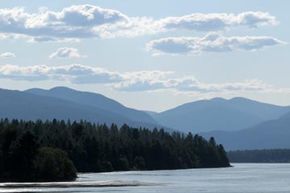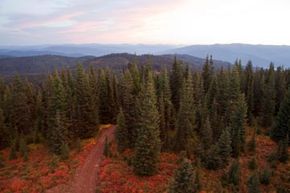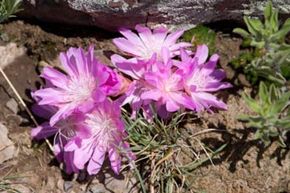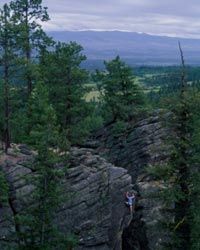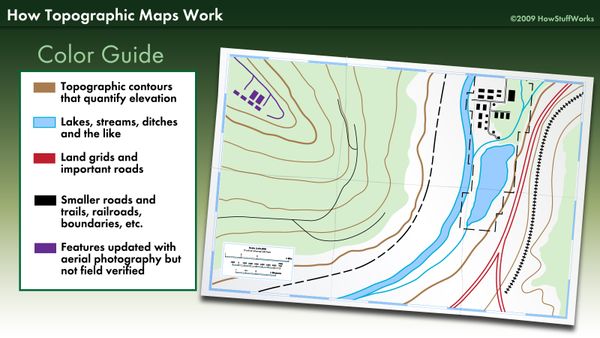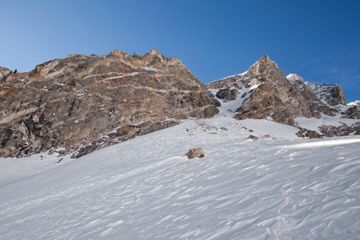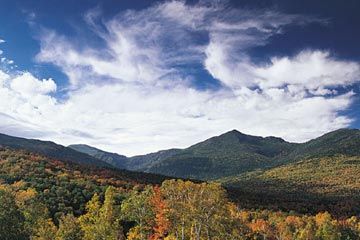According to Flathead Indian legend, the bitterroot flower was created when the rising sun took pity on a woman weeping for her starving people. The sun sent a bird to tell the woman that a new plant would grow from where her tears had fallen. Though bitter, the plant would be nourishing. For centuries, Native Americans treasured the roots of the bitterroot flower as a tasty delicacy. Today, the plant as well as the mountain forests where it grows continue to nourished people both physically and spiritually [source: Explore the Bitterroot].
Part of the Rocky Mountain range, the Bitterroot Mountains are a majestic feat of natural architecture. With towering rugged peaks, plummeting canyons, flower-filled meadows, and clear alpine lakes, these geological giants offer stunning views, crisp clean air and endless opportunities for adventure and wilderness recreation. The Bitterroot Mountains run along nearly the entire border between Idaho and Montana – about 200 miles (322 kilometers) -- creating an outdoor playground for anyone who appreciates the great outdoors [source: Explore the Bitterroot].
Advertisement
If you've never hiked the Bitterroots, you're in for a real treat. For starters, these mountains contain several pristine wilderness areas, including the Selway-Bitterroot, the Frank Church-River of No Return, and the Anaconda Pintler wildernesses [source: U.S. Forest Service]. These form part of the largest untouched wilderness area in the lower 48 states. There is also a great deal of history contained within the Bitterroot Mountains. The Lewis and Clark expedition passed through the Bitterroots, though they nearly starved to death in the process [source: National Geographic].
Hiking in the Bitterroots ranges from leisurely strolls to extremely difficult climbs. Hikers on some trails face dangers such as falls from high peaks, drowning in fast-moving rivers, and the significant threat of avalanche in winter. But with a bit of care and some preliminary precautions, hiking in the Bitterroot Mountains offers the chance to truly unplug from modern society and connect with the natural world. That's because this area is still virtually unexploited and undeveloped. It's a mountainous mystery under a fedora of fog. Fortunately, there are a few things we can tell you about this pristine wilderness in our guide to hiking the Bitterroot Mountains.
Advertisement
